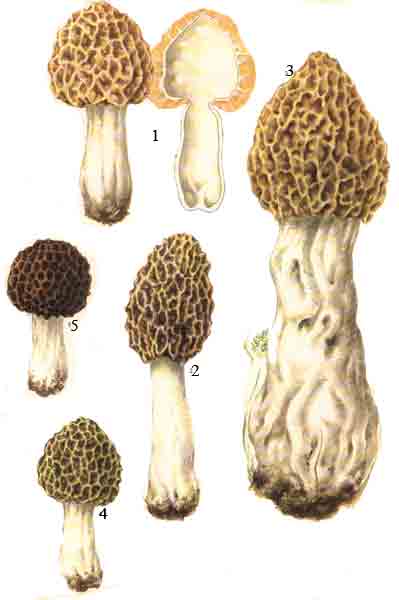
MORCHELLA
The Morchellae are hollow, with flesh of a waxy texture and appearance; they are found in the spring; edible, and some of them are very delicious if unripe, healthy, cleaned from the sand and the snails that often infest them, and if well cooked. The cap, globose, conical or uneven, either adheres to the upper part of the stem, in the true morchellas, or descends around the stem, roof-gutter-like, in the Mitrophorae. The cap soon becomes alveolate. The stem, basically white is sometimes cylindric, sometimes bulging; rugose, pruinose. The spores are ochraceous. The numbers indicate the height in centimeters (cm).
MORCHELLA ROTUNDA (1)
12-24 cm, cap globose, reddish ocher; large alveoli; found in meadows, near latifoliate trees.
MORCHELLA VULGARIS (2)
8-16 cm, cap ovoid, fuliginous, then ochraceous; but sometimes also grayish or even whitish.
MORCHELLA CRASSIPES
15-30 cm, cap conical or uneven; stem bulging, long,
furfuraceous.
MORCHELLA SPONGIOLA (4)
6-12 cm, cap globose, ochraceous; alveoli small, deep, uneven; stem firm; on sandy soils, even along the seashore.
MORCHELLA UMBRINA (5)
6-10 cm, cap globose, very dark; alveoli somewhat regular,
large, rounded.